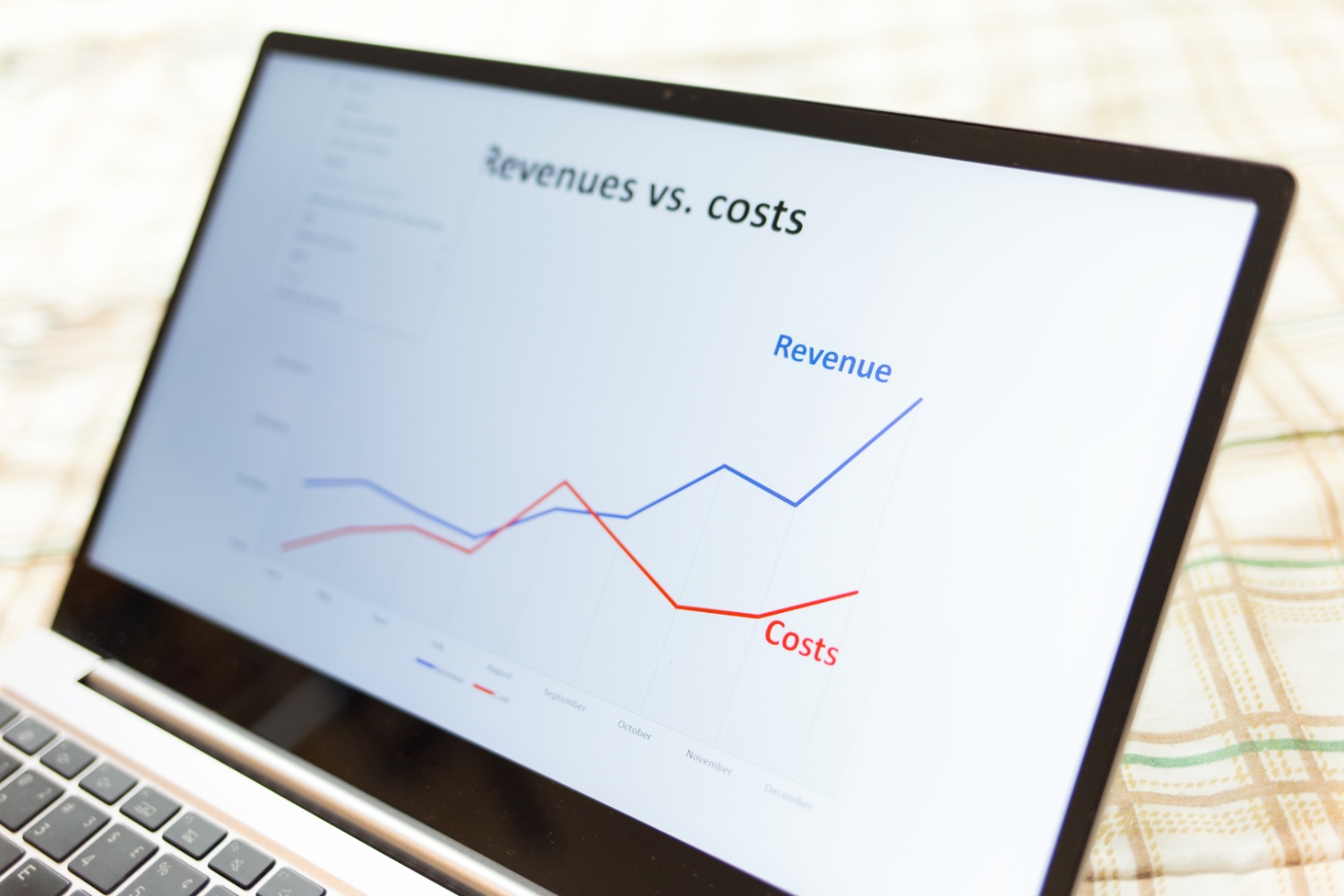Introduction
Welcome to our guide on how to reduce churn in the SaaS (Software as a Service) industry. Churn, also known as customer attrition or customer turnover, refers to the rate at which customers cancel or unsubscribe from your SaaS product or service. In a highly competitive marketplace, minimizing churn is crucial for the long-term success and profitability of your business.
Churn can have significant negative impacts on your revenue, customer base, and overall business growth. It is not only costly to acquire new customers, but losing existing ones means losing out on recurring revenue streams.
Reducing churn requires a strategic and proactive approach that focuses on understanding the underlying causes of churn, improving the customer onboarding experience, enhancing customer support and communication, optimizing the product and user experience, implementing a proactive retention strategy, leveraging data and analytics, and offering incentives for customer loyalty. In this guide, we will explore each of these areas in detail, providing actionable tips and best practices.
By implementing the strategies discussed in this guide, you will be able to effectively reduce churn, increase customer retention, and ultimately drive long-term success for your SaaS business. So, let’s dive in and explore how you can keep your customers happy, engaged, and loyal!
Understanding Churn in SaaS
Before we dive into strategies to reduce churn, it’s important to have a clear understanding of what churn means in the SaaS industry.
Churn refers to the number of customers who cancel or unsubscribe from your SaaS product or service within a specific time period. It is a key metric that directly impacts the health and growth of your business. High churn rates can be detrimental, leading to decreased revenue, reduced customer base, and increased customer acquisition costs.
Churn can be categorized into two types: voluntary churn and involuntary churn. Voluntary churn occurs when customers actively choose to cancel their subscription due to various reasons, such as dissatisfaction with the product, cost concerns, or finding a better alternative. On the other hand, involuntary churn happens when customers are unintentionally lost, typically due to expired credit cards, failed payment transactions, or involuntary cancellations.
Understanding the reasons behind churn is crucial for developing effective retention strategies. Common causes of churn in the SaaS industry include:
- Lack of value: If customers don’t perceive your product as valuable or if it fails to meet their expectations, they are more likely to churn.
- Poor onboarding experience: If customers struggle to understand how to use your product or feel overwhelmed during onboarding, they may become frustrated and churn.
- Inadequate customer support: If customers encounter issues or have unanswered questions without prompt support, they may lose trust in your product and seek alternatives.
- Competitive offerings: If customers find a similar product with better features or pricing, they may be tempted to switch, leading to churn.
- Unresponsive communication: If customers feel ignored or receive irrelevant communication from your company, they may lose interest and eventually churn.
By understanding the specific reasons for churn in your SaaS business, you can tailor your retention efforts to address these pain points and improve customer satisfaction. In the upcoming sections, we will discuss actionable strategies to reduce churn by addressing these underlying causes.
Identifying the Causes of Churn
One of the first steps in reducing churn in your SaaS business is to identify the primary causes of churn. By understanding why customers are leaving, you can take targeted actions to address these issues and improve customer retention.
To identify the causes of churn, you can utilize both quantitative and qualitative data. Here are a few methods to help you gain insights:
- Analyze customer feedback: Dive deep into customer feedback, whether through surveys, support tickets, or online reviews. Look for common themes and pain points that are mentioned repeatedly. This feedback can provide valuable insights into the areas of your product or service that may be causing dissatisfaction.
- Track usage patterns: Use analytics tools to track how customers are using your product. Look for patterns in user behavior, such as low engagement, infrequent usage, or specific features that are not being utilized. This can indicate areas where customers are not finding value, leading to potential churn.
- Monitor customer support interactions: Review customer support tickets and interactions to understand the nature of the issues customers are facing. This can highlight areas of product complexity or functionality gaps that may be causing frustration and driving churn.
- Segment your customer base: Divide your customer base into different segments based on factors such as customer size, industry, or usage patterns. Analyze churn rates within each segment to identify any commonalities. This can help you pinpoint specific segments that may be more prone to churn and allow you to tailor retention efforts accordingly.
- Track customer lifecycle milestones: Keep track of key customer journey milestones, such as onboarding completion, feature adoption, or contract renewal. Analyze the drop-off rates at each milestone to identify areas where customers may be slipping through the cracks and leaving your service.
By combining these data-driven approaches, you can gain a comprehensive understanding of the specific causes of churn in your SaaS business. Remember that these causes can vary from one company to another, so it’s important to analyze your own customer data and tailor your retention efforts accordingly.
Once you have identified the causes of churn, you can start implementing strategies to address them. In the next sections, we will discuss various approaches to reduce churn and improve customer retention in the SaaS industry.
Building a Customer-Centric Onboarding Experience
The onboarding process is a critical phase in the customer journey that sets the tone for the ongoing relationship with your SaaS product. A smooth and customer-centric onboarding experience can greatly contribute to reducing churn and improving customer retention.
Here are some strategies to build a customer-centric onboarding experience:
- Simplify the onboarding process: Make the onboarding process as simple and intuitive as possible. Avoid overwhelming new customers with too much information at once. Break down the onboarding steps into smaller, digestible tasks that guide users through the key features and functionalities of your product.
- Provide proactive guidance: Offer guidance throughout the onboarding process to help customers successfully navigate your product. This can be in the form of interactive tutorials, video walkthroughs, or tooltips that highlight important features. Proactively addressing common pain points during onboarding can reduce confusion and frustration, increasing the likelihood of customer satisfaction and retention.
- Personalize the onboarding experience: Tailor the onboarding experience to each customer’s specific needs and goals. Gather information during the signup process or through user preferences to customize the onboarding journey. This can include suggesting relevant features, setting up personalized dashboards, or providing targeted educational resources based on the customer’s industry or use case.
- Offer ongoing support: Make support readily available during the onboarding process. Provide multiple channels for customers to seek assistance, such as live chat, email, or a dedicated customer support portal. Promptly address any concerns or questions raised during onboarding to ensure a positive customer experience.
- Measure and optimize onboarding success: Continuously assess the effectiveness of your onboarding process and iterate based on customer feedback and data. Track key metrics such as time to value (how quickly customers achieve their desired outcomes), completion rates of onboarding tasks, and user satisfaction scores. Identify any bottlenecks or areas of improvement and make necessary changes to streamline and optimize the onboarding experience.
By focusing on building a customer-centric onboarding experience, you can set a strong foundation for customer success and engagement. Emphasizing simplicity, providing guidance, personalizing the experience, offering ongoing support, and consistently optimizing the process will help reduce churn and increase customer retention.
In the next sections, we will explore additional strategies to improve customer support and communication, enhance the product and user experience, and implement a proactive retention strategy to further reduce churn in the SaaS industry.
Improving Customer Support and Communication
Effective customer support and communication play a crucial role in reducing churn and improving customer retention in the SaaS industry. When customers feel supported and valued, they are more likely to stay loyal to your product. Here are some strategies to enhance customer support and communication:
- Provide responsive and timely support: Ensure that your customer support team is readily available to respond to customer inquiries and issues. Set clear response time expectations and strive to meet or exceed them. Utilize helpdesk software or ticketing systems to effectively manage and track support requests.
- Offer multiple support channels: Provide customers with different channels to reach out for support, such as live chat, email, phone support, or self-service portals. Each customer has different preferences, so offering a variety of support options allows them to choose the one that best suits their needs.
- Empower self-service options: Build a comprehensive knowledge base or FAQ section that addresses common customer questions and issues. Offer tutorials, video guides, or step-by-step instructions to help customers troubleshoot and find solutions on their own. Empowering customers to resolve issues independently can significantly improve their overall experience and reduce reliance on support.
- Proactively communicate with customers: Keep customers informed about product updates, new features, and upcoming changes. Regularly send email newsletters or in-app notifications to highlight relevant information and provide valuable insights. Proactive communication ensures that customers feel engaged and involved with your product, reducing the chances of them becoming disengaged and churning.
- Implement a customer feedback loop: Encourage customers to provide feedback on their experience with your product and support. Conduct surveys, gather feedback during support interactions, or create user feedback forums. Actively listen to customer feedback, respond to their concerns, and strive to continually improve based on their suggestions. When customers feel heard and valued, they are more likely to remain loyal to your brand.
Improving customer support and communication is an ongoing process. Continually assess the effectiveness of your support channels and communication strategies. Monitor customer satisfaction scores, response times, and feedback to identify areas for improvement. Regularly train your support team to provide excellent service and ensure they are well-equipped to handle customer inquiries effectively.
By focusing on improving customer support and communication, you can cultivate a positive and engaged customer base, leading to higher customer retention rates and ultimately reducing churn.
In the next sections, we will discuss strategies to enhance the product and user experience, implement a proactive retention strategy, utilize data and analytics, and offer incentives for customer loyalty to further reduce churn in the SaaS industry.
Enhancing the Product and User Experience
The quality of your product and user experience plays a significant role in reducing churn and improving customer retention in the SaaS industry. By continuously enhancing your product and providing a seamless user experience, you can keep customers engaged, satisfied, and more likely to stay loyal. Here are some strategies to enhance the product and user experience:
- Conduct user research: Gain deep insights into your target audience by conducting user research. Understand their needs, pain points, and expectations. Use surveys, interviews, or usability testing to gather valuable feedback that will inform your product enhancements.
- Focus on usability: Ensure that your product is easy to use and navigate. Remove any unnecessary complexity or confusing elements. Invest in a clean and intuitive user interface, with clear design and navigation patterns that make it effortless for users to accomplish their goals.
- Iterate and improve based on feedback: Encourage user feedback and actively listen to customer suggestions. Continuously iterate on your product based on this feedback to address pain points, introduce new features, or enhance existing ones. Transparently communicate these updates to your customers to keep them engaged and informed.
- Invest in performance and reliability: A slow and unreliable product can lead to frustration and dissatisfaction. Continually optimize your product’s performance to ensure quick loading times, responsiveness, and stability. Regularly test your application for any bugs or issues and promptly address them to provide a reliable experience to your customers.
- Personalize the experience: Utilize customer data to personalize the user experience. Tailor product recommendations, content, or features based on individual user preferences, behaviors, or demographics. Personalization helps customers feel more connected to your product, fostering a sense of ownership and loyalty.
Additionally, consider embracing automation and integrations to enhance the overall user experience. Automate repetitive tasks, streamline workflows, and integrate with other tools and platforms that your customers use. This integration can provide a seamless experience for users and increase the value they derive from your product.
Regularly gather feedback through user testing, beta programs, or customer surveys to understand how well your product and user experience align with customer expectations. Analyze usage and engagement metrics to identify areas that might need improvement. By prioritizing the enhancement of your product and user experience, you can significantly enhance customer satisfaction and reduce churn.
In the next sections, we will explore strategies to implement a proactive retention strategy, utilize data and analytics, and offer incentives for customer loyalty to further reduce churn in the SaaS industry.
Implementing a Proactive Retention Strategy
A proactive retention strategy is crucial for reducing churn and increasing customer loyalty in the SaaS industry. Rather than waiting for customers to show signs of disengagement or dissatisfaction, a proactive approach involves taking preemptive measures to retain customers and foster long-term relationships. Here are some strategies to implement a proactive retention strategy:
- Nurture customer relationships: Develop strong and meaningful relationships with your customers. Regularly engage with them through personalized communication, such as personalized emails, newsletters, or exclusive events. Show them that you care about their success and growth and provide them with ongoing value beyond the initial sale.
- Conduct regular check-ins: Set up processes for regular check-ins with your customers. This can involve sending surveys or conducting one-on-one meetings to assess their satisfaction levels, understand any challenges they may be facing, and offer assistance proactively. Identifying and addressing issues in the early stages can help prevent customers from churning.
- Offer product education and training: Provide ongoing product education and training resources to help customers maximize the value they get from your product. Offer webinars, tutorials, or knowledge base articles that address different use cases or provide advanced tips and tricks. By helping customers unlock the full potential of your product, you increase their likelihood of staying engaged and satisfied.
- Anticipate customer needs: Stay ahead of your customers’ needs by predicting potential pain points or challenges they may face. Proactively offer solutions, suggestions, or relevant resources to address these needs before they become significant issues. By demonstrating your proactive approach, you can build trust and strengthen the customer relationship.
- Create loyalty programs and incentives: Implement loyalty programs that reward and incentivize continued engagement and loyalty. Offer exclusive perks, discounts, or access to premium features for customers who remain active and loyal to your product. This not only encourages ongoing usage but also shows your appreciation for their loyalty.
Remember, implementing a proactive retention strategy requires a data-driven approach. Regularly analyze customer data, such as engagement metrics, usage patterns, or customer lifecycle stages, to identify customers at risk of churn. By identifying early warning signs, you can intervene proactively and provide personalized retention efforts.
By actively working to retain your customers, you can reduce churn and build a loyal customer base that becomes advocates for your product. In the next section, we will discuss how to leverage data and analytics to further reduce churn in the SaaS industry.
Utilizing Data and Analytics to Reduce Churn
Data and analytics play a critical role in reducing churn in the SaaS industry. By leveraging the power of data, you can gain valuable insights into customer behavior, identify churn patterns, and take proactive measures to retain customers. Here are some strategies to utilize data and analytics to reduce churn:
- Define key metrics: Identify and track key metrics that indicate customer engagement, satisfaction, and potential churn. These metrics can include customer lifetime value (CLTV), customer acquisition cost (CAC), churn rate, retention rate, or product usage metrics. By tracking these metrics, you can pinpoint areas that need improvement and measure the effectiveness of your churn reduction efforts.
- Segment your customer base: Divide your customers into different segments based on key attributes, such as user behavior, industry, or subscription plan. Analyze churn rates within each segment to identify patterns and trends. This allows you to tailor your retention strategies to specific customer segments and address their unique needs and challenges.
- Perform cohort analysis: Conduct cohort analysis to understand how different groups of customers behave over time. By analyzing cohorts based on the time of acquisition or other relevant factors, you can identify trends and patterns that may contribute to churn. This analysis helps you understand the customer journey and adapt your retention strategies accordingly.
- Utilize predictive analytics: Leverage predictive analytics to forecast customer behavior and identify customers who are at risk of churn. By analyzing historical data and customer patterns, predictive models can help you proactively target customers who may need extra attention or intervention to prevent churn. This allows you to allocate your resources effectively and focus on customers who are most likely to churn.
- Implement behavior-based triggers: Set up automated triggers based on customer behavior that can signal potential churn. For example, if a customer has not logged in or used certain features for a specific period of time, send them a targeted re-engagement email or offer additional support resources. By proactively reaching out to customers at risk of churn, you can intervene before it’s too late.
Remember to regularly analyze and interpret your data to uncover actionable insights. Invest in data analytics tools or work with data analysts to ensure you are deriving meaningful information. Use data to test and iterate on your retention strategies, measuring the impact of your efforts over time.
By utilizing data and analytics effectively, you can gain a deeper understanding of customer behavior, identify trends, and take proactive measures to reduce churn. In the next section, we will discuss how to offer incentives and discounts for customer loyalty as another strategy to reduce churn in the SaaS industry.
Offering Incentives and Discounts for Customer Loyalty
One effective strategy to reduce churn and foster customer loyalty in the SaaS industry is by offering incentives and discounts to reward customers for their continued engagement. By providing added value and demonstrating appreciation, you can encourage customers to remain loyal to your product. Here are some ways to implement incentives and discounts for customer loyalty:
- Loyalty programs: Develop a loyalty program that rewards customers for their ongoing engagement and usage. Offer tiered benefits, exclusive access to new features or beta testing, or discounts on future upgrades. Loyalty programs create a sense of exclusivity and make customers feel valued, encouraging them to stay committed to your product.
- Renewal discounts: Provide incentives for customers to renew their subscriptions by offering discounts or promotional pricing. This can help alleviate pricing concerns and make the decision to continue using your product more appealing.
- Referral programs: Encourage satisfied customers to refer your product to others by offering incentives for successful referrals. Reward both the referrer and the referred customer with special discounts, extended trial periods, or access to premium features. Referral programs not only drive customer acquisition but also strengthen customer loyalty as they become advocates for your product.
- Special offers and upgrades: Surprise loyal customers with special offers or upgrades, such as free add-ons, extended trial periods, or access to exclusive content or events. These unexpected perks make customers feel valued and appreciated, reinforcing their commitment to your product.
- Exclusive content or early access: Provide loyal customers with exclusive content, such as in-depth guides, industry insights, or premium resources. Offer them early access to new features or beta versions of your product. This not only enhances their user experience but also fosters a sense of exclusivity, making it more difficult for them to consider switching to a competitor.
When offering incentives and discounts, it’s important to strike a balance between providing value to your loyal customers and maintaining the profitability of your business. Carefully analyze the costs and benefits of each incentive, ensuring that they align with your business goals and customer preferences.
Regularly communicate and promote these loyalty incentives to your customers. Utilize email marketing, in-app notifications, or personalized messages to inform them about the available rewards and encourage their participation.
By offering incentives and discounts for customer loyalty, you create a win-win situation: customers receive added value, while you increase their loyalty and reduce churn. In the next section, we will wrap up our discussion and summarize the key strategies to reduce churn in the SaaS industry.
Conclusion
Reducing churn in the SaaS industry is vital for sustainable growth and success. By implementing a comprehensive set of strategies, you can improve customer retention and foster long-term customer loyalty. Let’s recap the key strategies we have covered:
Understanding the causes of churn and tailoring your efforts to address them is crucial. Building a customer-centric onboarding experience sets a strong foundation for customer success. Improving customer support and communication ensures that customers feel valued and heard. Enhancing the product and user experience creates a seamless and engaging journey for customers. Implementing a proactive retention strategy involves nurturing customer relationships and anticipating their needs. Utilizing data and analytics helps you gain insights and make data-driven decisions. Finally, offering incentives and discounts for customer loyalty rewards and encourages continued engagement.
Remember, these strategies require ongoing effort and continuous iteration. Regularly assess your performance, measure key metrics, and make data-informed adjustments. Keep a pulse on customer feedback and focus on delivering value throughout the customer journey.
Reducing churn is a continuous process that requires a customer-centric mindset and dedicated resources. By prioritizing customer satisfaction, improving the user experience, and implementing effective retention strategies, you can significantly reduce churn and build a loyal customer base that drives the long-term success of your SaaS business.
We hope that this guide has provided you with valuable insights and actionable strategies to reduce churn in the SaaS industry. By implementing these strategies, you can create a solid foundation for customer retention and propel your business towards sustained growth and success.

























